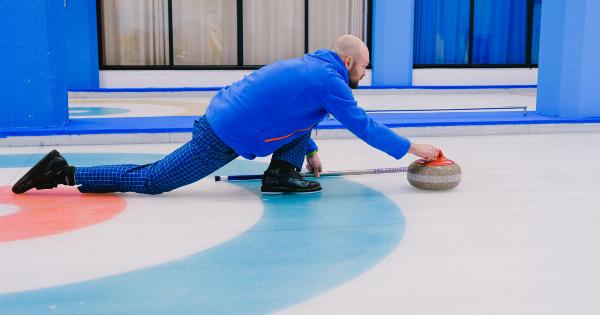Knee Baker Bladder, also known as prepatellar bursitis, is a common condition that causes pain and swelling at the front of the knee. This condition primarily affects people who frequently kneel on hard surfaces due to work or other activities.
Causes of Knee Baker Bladder
There are several factors that can contribute to the development of Knee Baker Bladder:.
1. Repetitive Kneeling
People who engage in activities that involve repetitive kneeling, such as carpet laying, gardening, or scrubbing floors, are at an increased risk of developing prepatellar bursitis.
The repeated pressure on the knee joint irritates the bursa, leading to inflammation and swelling.
2. Trauma
Direct trauma to the knee, such as a fall or blow to the knee, can also cause Knee Baker Bladder. The impact damages the bursa, resulting in inflammation and fluid accumulation in the joint.
3. Infection
In some cases, Knee Baker Bladder may be caused by an infection in the bursa. This is known as septic prepatellar bursitis and usually occurs due to bacteria entering the bursa through a cut or scrape on the knee.
4. Medical Conditions
Certain medical conditions, such as gout, rheumatoid arthritis, or osteoarthritis, can increase the risk of developing prepatellar bursitis.
These conditions cause inflammation in the joints, including the knee, making it more susceptible to bursa inflammation as well.
Symptoms of Knee Baker Bladder
The symptoms of Knee Baker Bladder may vary depending on the severity of the condition, but common signs include:.
1. Swelling
Swelling around the front of the knee is a typical symptom of Knee Baker Bladder. The bursa becomes inflamed and fills with excess fluid, leading to noticeable swelling.
2. Pain and Tenderness
Individuals with prepatellar bursitis often experience pain and tenderness at the front of the knee joint. The pain can range from mild discomfort to severe, sharp pain.
3. Redness and Warmth
Due to the inflammation in the bursa, the skin over the affected area may appear red and feel warm to the touch.
4. Limited Knee Movement
As the swelling increases, it can restrict the range of motion in the knee joint. Activities such as walking, climbing stairs, or kneeling can become more challenging and painful.
Treatment Options for Knee Baker Bladder
The treatment for Knee Baker Bladder aims to relieve pain, reduce swelling, and improve mobility. Below are some common treatment options:.
1. Rest and Activity Modification
One of the simplest and most effective ways to treat Knee Baker Bladder is to give the knee joint ample rest.
Avoiding activities that exacerbate the symptoms, such as kneeling or putting excess pressure on the knee, can help reduce inflammation and promote healing.
2. Ice Therapy
Applying ice packs to the affected knee can help alleviate pain and reduce swelling. Ice therapy should be done for about 15-20 minutes at a time, several times a day, especially after activities that may worsen the condition.
3. Medications
Over-the-counter nonsteroidal anti-inflammatory drugs (NSAIDs), such as ibuprofen or naproxen, can help reduce pain and inflammation associated with Knee Baker Bladder.
However, it is important to consult a healthcare professional before using any medications.
4. Compression
Using compression bandages or knee sleeves can help reduce swelling and provide support to the knee joint. These compression aids should be worn with caution to avoid restricting blood flow.
5. Physiotherapy
A physiotherapist can provide specific exercises and stretching techniques to strengthen the muscles around the knee joint and improve mobility. They may also use modalities such as ultrasound or electrical stimulation to aid in the healing process.
6. Aspiration and Injections
In severe cases of Knee Baker Bladder where there is excessive fluid accumulation, a healthcare professional may perform a procedure called aspiration. This involves drawing out the fluid from the bursa using a needle.
Corticosteroid injections may also be administered to reduce inflammation and pain.
7. Antibiotics
If the prepatellar bursitis is caused by an infection, antibiotics may be prescribed to treat the underlying infection. This is crucial to prevent the spread of the infection and further complications.
When to Seek Medical Attention
In most cases, Knee Baker Bladder can be effectively managed with conservative treatment methods. However, it is important to seek medical attention if:.
1. The pain and swelling worsen
If the symptoms of Knee Baker Bladder continue to worsen despite rest and home remedies, it is advisable to consult a healthcare professional for further evaluation.
2. There is a fever or signs of infection
If there is a fever or signs of infection (increased redness, warmth, or pus-like discharge), it may indicate septic prepatellar bursitis. Immediate medical attention is necessary in such cases.
Conclusion
Knee Baker Bladder, or prepatellar bursitis, is a condition characterized by inflammation and swelling at the front of the knee. It commonly affects individuals who frequently kneel or put excessive pressure on their knees.
The condition can be managed with rest, ice therapy, medications, compression, physiotherapy, and in severe cases, medical procedures. Seeking medical attention is important if the symptoms worsen or if signs of infection are present.
By understanding the causes and treatment options for Knee Baker Bladder, individuals can take appropriate measures to alleviate symptoms and promote healing.























